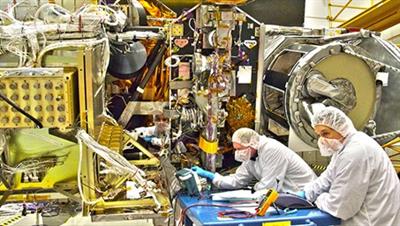Systems Thinking for Modern Aerospace Complexity

This comprehensive 2-day course covers systems thinking for addressing complexity in the development of modern aerospace systems. Applying a systems approach provides insight into the unexpected ways a system will behave due to complexity. Learning how to deal with scale, interdependencies and interconnectedness in large systems uncovers leverage points for managing complexity. The course covers complexity management from a number of perspectives, including organizational learning, quantitative metrics and system visualization techniques.
Learning Objectives
- Explain the causes of emergent behavior
- Determine whether a problem is in the simple, complicated, complex or chaotic domain
- Compare systems thinking and systems engineering historically and currently
- Apply Senge's Five Disciplines to engineering problem solving methodology
- Demonstrate how feedback mechanisms highlight how delays cause system oscillations
- Synthesize methods used in other industries that are compatible with hardware focused engineered systems
- See detailed outline below
Who Should Attend
Intended participants are engineers and aerospace professionals in technical fields who work on large system development. It is not geared toward a specific technical field, rather to engineers and leaders that could use a bigger picture perspective on system interactions. The course benefits anyone interested in understanding and managing complexity within aerospace.
Course Information
Type of Course: Instructor-Led Short Course
Course Length: 2 days
AIAA CEU's available: Yes
- How Complexity Affects Aerospace
- Griffin’s Elegant Design
- Definition of Complexity and Emergent Behavior
- Linear vs. Non-linear Thinking
- Development of Systems Engineering and Systems Thinking
- Thinking in Systems
- How Perspective Influences your Decisions
- Meadows Systems Approach to Problem Solving
- Systems Thinking for Learning Organizations
- Double Loop Learning and System Traps
- Transformation Engineering
- Guiding Principles for Complexity
- INCOSE Primer
- Underlying Systemic Structure Models
- Cynefin Domain Categories for Problems and Types of Solutions
- Complex Adaptive Systems
- Addressing Emergent Behavior and Self-Organization
- Organizations as Complex Adaptive Systems
- Collaborative Systems Thinking and Sensemaking
- Complexity Measurement and Risk Assessment
- Complexity Induced Vulnerabilities
- Circuit Breaker Interventions
- Coupling and Modularity Aspects of Complexity
- Case Studies in Aerospace
- Agile for Aircraft Systems Integration
- Space Shuttle Accident Investigations
- Engineering Problem Solving Strategies
- Summary and Further Learning Opportunities

Dr. Dianne DeTurris is Professor of Aerospace Engineering at Cal Poly State University in San Luis Obispo, CA. She has taught propulsion courses for 20 years, with a research specialization in hypersonic airbreathing propulsion, and teaches complexity in engineered systems. She is an academic scholar for the AIAA Complex Aerospace Systems Exchange and written extensively on complexity in aerospace. She also researches global competency for engineers.

Dr. Shannon Flummerfelt is an Endowed Professor at Oakland University in Organizational Leadership. She specializes in organizational and employee development, including systems competency and Lean. She is editor of AIAA Progress in Astronautics and Aeronautics volume 256, Complex Systems Engineering: Theory and Practice.
AIAA Training Links
For information, group discounts,
and private course pricing, contact:
Lisa Le, Education Specialist (lisal@aiaa.org)
